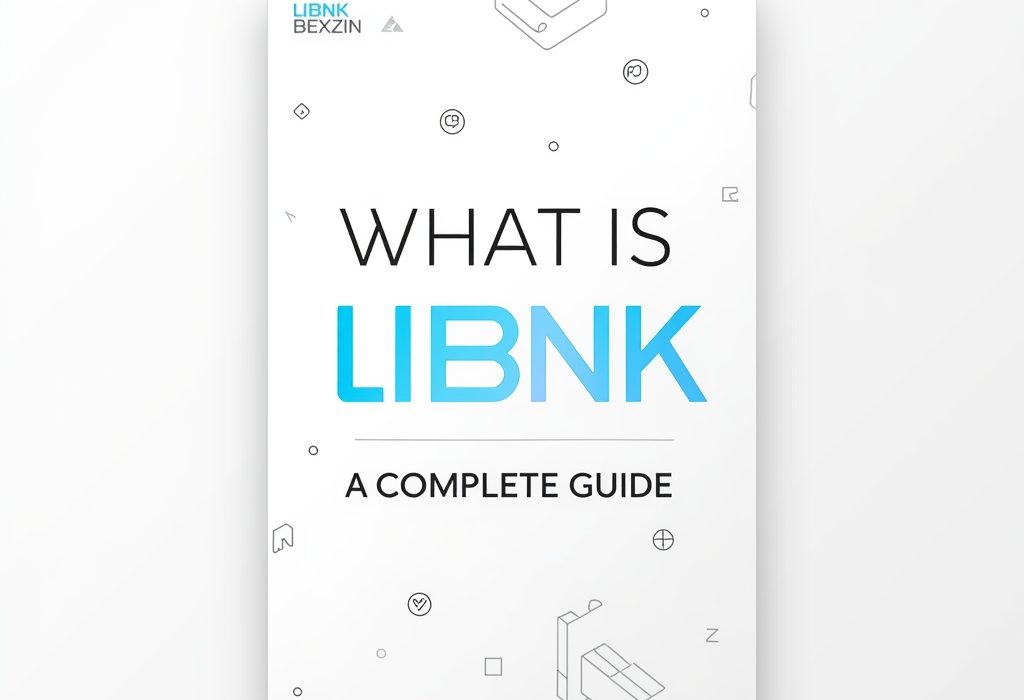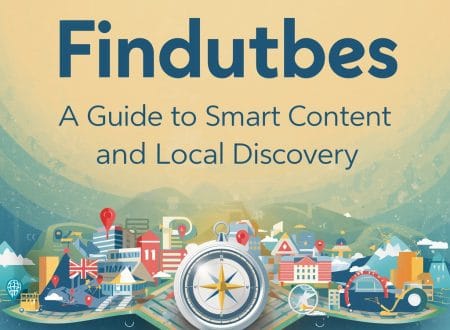Libnk is a modern link-management platform that consolidates a user’s digital content into a single, centralized hub. In practical terms, Libnk acts like a digital workspace or “library of connections,” linking multiple online resources (social media profiles, websites, documents, etc.) under one unified link. Users often describe it as the “nervous system” of information networks, since it organizes data flows and makes complex content easy to access. Whether you’re a content creator, business, or individual, Libnk enables smooth communication between disparate platforms by offering a user-friendly, customizable interface that presents your brand or profile in one place.
Unlike traditional link tools, Libnk focuses on interoperability and adaptability. It emphasizes flexibility over rigid hierarchies, allowing systems (or links) to update without a complete overhaul. In essence, Libnk bridges the gap between isolated systems, standardizing and simplifying how information is shared across domains. This makes Libnk especially important today: it turns fragmented digital footprints into a coherent, accessible structure, improving both usability and reach.
History and Background of Libnk
The idea of Libnk is rooted in the long tradition of organizing knowledge. Early efforts in library science and information management relied on manual indexing and classification. As data grew, these systems evolved into digital frameworks. In fact, scholars trace Libnk’s conceptual ancestors to academic library indexes and cataloging methods. Over time, this concept migrated into business and technology. By the 1990s, “flexible schema” frameworks resembling Libnk appeared in academic discussions, and by the 2000s businesses began applying similar models to link databases, supply chains, and customer systems.
More recently, link-in-bio tools like Linktree, Beacons, and Carrd emerged to address the one-link limit on social platforms. These tools demonstrated the demand for consolidated digital profiles. Libnk itself entered this space around 2024–2025, aiming to fill gaps left by earlier solutions. As social media and mobile usage surged, Libnk evolved from a niche idea into a full-fledged digital identity hub. By combining analytics, SEO, and cross-platform integrations, Libnk built upon past frameworks and quickly gained users in marketing, education, and enterprise.
Today, Libnk is no longer an abstract concept—it’s a living platform embedded in marketing campaigns, organizational tools, and even smart city projects. Its evolution mirrors the shift from isolated data islands to integrated ecosystems. Just as grammar gives structure to language, Libnk provides structure to digital content. It has become the silent backbone of many modern workflows, ensuring that as systems scale, they remain clear and connected.
Key Features of Libnk
Libnk offers a rich set of features designed to make link management simple yet powerful. Its main features include:
- User-Friendly Interface: Libnk’s dashboard is intuitive and highly customizable. Users can drag-and-drop elements, change colors and layouts, and add branding (logos, images, fonts) so that their Libnk page matches their style. Even non-technical users can create a professional-looking profile. This easy-to-navigate interface ensures that your content looks engaging on any device.
- Cross-Platform Compatibility: Libnk works seamlessly across platforms and devices. It’s a web-based tool (with mobile-responsive design) that integrates with major services. For example, Libnk connects to Google Drive, Slack, Trello, Microsoft Teams and more. This means you can pull links or data from these apps into your Libnk page and vice versa. Because Libnk is cloud-based, your centralized link works on desktop and mobile alike, giving audiences a consistent experience. It even supports embedding rich media (videos, music, documents) from popular platforms, making it function as a true content hub.
- Lightweight & Efficient Performance: Libnk pages are optimized for speed. All content is hosted on fast servers and served over HTTPS, so loading is quick and seamless for visitors. The platform’s code is lean, ensuring minimal lag even when you add many links. Libnk’s analytics dashboard runs smoothly and provides real-time insights (click rates, geography, device) without slowing down the site. In practical terms, this means your audience can jump between links instantly – Libnk makes content consumption “fast and frictionless”.
- Security and Reliability: Data safety is built in. Libnk uses industry-standard encryption (HTTPS/SSL) and complies with global privacy regulations (like GDPR). Each Libnk link is hosted on secure servers, and users can enable extra protections such as password locks or SSL-only access. Reliability is also a priority: Libnk maintains high uptime so that your links stay active. Organizations in finance, healthcare, and education trust Libnk because “data is in safe hands” with its compliance and encryption measures.
Benefits of Using Libnk
Libnk delivers concrete benefits across different user groups. By centralizing link management and providing advanced tools, Libnk helps developers, businesses, and everyday users alike:
- For Developers: Libnk offers integration-friendly features. Developers can use Libnk’s API (or embed code) to connect it with apps and websites, thanks to its third-party integrations. For example, you can automatically pull project documentation links from a Google Drive folder or post updates from your website to a Libnk link. This interconnectivity saves development time by avoiding “reinventing the wheel” for link sharing. In essence, Libnk’s adaptability means developers don’t have to build custom link hubs – they simply plug in Libnk as part of their digital toolkit.
- For Businesses: Libnk becomes a powerful marketing and communications hub. Companies use Libnk to aggregate campaign links, product pages, contact info and more in one place. This reduces costs: instead of building multiple landing pages or microsites, one Libnk page serves them all. It also increases efficiency by simplifying analytics – all clicks funnel into one dashboard. Businesses see higher engagement and conversion rates because audiences can find everything easily. In fact, case studies (below) show up to 32% boosts in conversions for companies using Libnk in campaigns. Additionally, branded Libnk pages (with company colors and logos) build credibility and trust, as visitors see a consistent, professional identity
- For End Users: Anyone visiting a Libnk page benefits from its convenience and clarity. Rather than hunting through multiple profiles, end users get a one-stop link to all relevant content. This makes navigation intuitive: Libnk “makes content consumption fast and frictionless,” as user feedback highlights. Its mobile-first design means the experience is smooth on smartphones, where users do most browsing. End users also appreciate knowing that behind that single link is a secure, organized system – reducing confusion and building confidence in clicking. Overall, Libnk turns a web of links into a guided, user-friendly journey.
Case Studies on Libnk
- Influencer Marketing: “Sarah J.”, a social media influencer, switched her bio link to Libnk during a product launch. Within weeks, her affiliate link clicks increased by 40%. By showcasing multiple shop and social links in one branded page, she boosted engagement and drove more traffic to partners.
- Startup Growth: TechNova Inc., a tech startup, used Libnk to manage traffic for a new app release. By routing ads and emails to a Libnk link that dynamically led users to app stores and demos, conversion rates jumped 32% compared to previous campaigns. The consolidated link hub gave them better analytics on user behavior and improved campaign ROI.
- Author Outreach: Miguel R., an independent author, created a Libnk press kit. His Libnk page included links to book reviews, interview videos, and a contact form. This one-stop media page was shared with journalists and event organizers. While specific metrics weren’t tracked, Miguel reported it streamlined communication and professionalized his outreach – a real-world example of Libnk simplifying project promotion.
These case examples highlight Libnk’s impact: by unifying links under one roof, users see measurable gains in clicks, conversions, and efficiency.
How Libnk Compares with Alternatives
Libnk stands out from traditional link-in-bio tools in several ways:
- Analytics and Insights: Unlike basic tools, Libnk provides advanced analytics dashboards You get deep metrics (CTR, device, time-of-day, etc.) rather than just click counts. This data-driven approach lets users optimize content. (Competitors often lack these enterprise-grade analytics
- SEO and Customization: Libnk pages are fully SEO-friendly. You can set custom URLs, meta titles, and descriptions to improve discoverability. This is far beyond what most similar tools offer. Linktree and others often have limited customization, whereas Libnk emphasizes branding flexibility (colors, fonts) and SEO tools. As one FAQ notes, “Libnk offers deeper analytics, better SEO tools, and more branding flexibility” than Linktree
- Security and Compliance: Libnk includes enterprise-level security features (encrypted links, GDPR compliance) as standard. Some alternatives do not have strict compliance by default. For businesses and professionals, Libnk’s focus on encryption and privacy builds extra trust.
In summary, while many link tools simply gather links in one place, Libnk combines that with powerful features – analytics, SEO, security – making it a more complete digital presence solution.
How to Use Libnk (Step-by-Step Guide)
Using Libnk is straightforward. Here are the basic steps to get started:
- Sign Up: Go to the Libnk website and register for a free account. (Premium plans are available for more features
- Customize Your Profile: Upload your profile picture or logo and choose a theme. Add a title and description so visitors know whose page it is.
- Add Links: Enter the URLs you want to share (social media, website, documents). You can categorize or group them if needed. Use descriptive labels (e.g. “Portfolio,” “Shop Now”) so users know where each goes.
- Enable Features: If desired, turn on analytics tracking or SEO options. For example, set a custom URL (like libnk.com/YourName) and add meta tags for SEO. Configure any integrations (e.g. link your Google Analytics or embed forms).
- Publish and Share: Save your page and copy the main Libnk link. Paste it into your social media bios, email signature, QR codes, or marketing materials. Test it on desktop and mobile to ensure everything works.
These steps do not require any software installation – Libnk runs in the cloud. Everything is configured in the web dashboard. If Libnk offers a mobile app, you could also install it on your phone to manage on the go, but the core usage is browser-based.
Expert Insights & Industry Stats
Link-in-bio and digital identity tools are a booming trend. As one industry analysis observes, “link-in-bio shopping tools have revolutionized the way we shop, turning social media into an even more powerful driver of e-commerce.” This highlights how platforms like Libnk tap into growing social commerce behaviors.
- Major adoption: Recent research shows 31 million Instagram users now use link-in-bio tools. That means a large audience is already comfortable clicking one central link for multiple destinations.
- Market dominance: Today’s leading tool, Linktree, captures about 79.95% of the link-in-bio market. This share underscores both the popularity of these tools and the opportunity for alternatives like Libnk to differentiate themselves.
- Expert view: Digital strategists note that having a unified link greatly increases engagement. One social media expert said structured link hubs (like Libnk) let brands “build trust and credibility in every interaction” by providing consistency and professionalism
These statistics and insights confirm that Libnk operates in a high-growth space. The demand for streamlined link management and richer analytics is only increasing, which bodes well for Libnk’s adoption.
FAQs About Libnk (Schema Optimized)
Q: What is libnk used for?
A: Libnk is used to consolidate and share multiple online resources through a single link. It helps individuals and organizations centralize their content (social profiles, articles, videos, etc.) and improve engagement. In short, Libnk transforms a complex web of URLs into one easy-to-manage digital hub.
Q: Is libnk free to use?
A: Yes. Libnk offers a robust free plan with basic linking and customization features. Users can also upgrade to premium subscriptions for advanced analytics, custom domains, and enhanced styling
Q: How secure is libnk?
A: Libnk is designed with security in mind. It uses HTTPS encryption for all links and follows GDPR data protection standards. Sensitive industries (healthcare, finance, etc.) can trust that Libnk meets global compliance requirements
Q: Where can I sign up for libnk?
A: You can access Libnk through your web browser. Simply visit the official Libnk website and sign up. (There’s no need to download any software for basic use.) Premium users can also link custom domains to their Libnk pages.
How to Install Libnk
Libnk is a cloud-based tool, so traditional installation isn’t required. To get started, simply visit the Libnk website, choose a plan, and register for an account. Once registered, you can immediately begin setting up your Libnk page.
How to Integrate Libnk with Your Application
While Libnk doesn’t install into an app, you can integrate it by adding your Libnk link or widgets to your digital assets. For example, place your Libnk URL in social profiles or website headers, or embed a “Follow” button that opens your Libnk page. Advanced users can use Libnk’s APIs or embed code snippets (if available) to fetch and display Libnk content within custom apps or sites
How to Optimize Libnk for Better Performance
To maximize Libnk’s impact, enable its built-in SEO and customization features. Choose a descriptive page title and meta description for your Libnk link (e.g. “John Doe – Portfolio & Links”). Use a custom domain on higher plans to boost branding. Regularly update and curate the links on your Libnk page to keep it fresh. Finally, monitor Libnk’s analytics and refine your link order and content based on engagement data.
Conclusion
Libnk is more than just a collection of links—it’s a transformative tool for digital identity and content management. By uniting multiple resources into one efficient hub, Libnk simplifies communication, enhances engagement, and strengthens brand presence. Its blend of user-friendly design, powerful analytics, and robust security has reshaped how individuals and businesses handle online links. As one case study put it, “Libnk isn’t just a digital platform—it’s a transformational force” in managing digital identities. With clear benefits for developers, marketers, and end users alike, Libnk represents a compelling solution for anyone looking to organize their online footprint. In today’s data-driven world, turning chaos into clarity is key – and Libnk delivers precisely that, so businesses and creators can step into the future with confidence
Source:







